

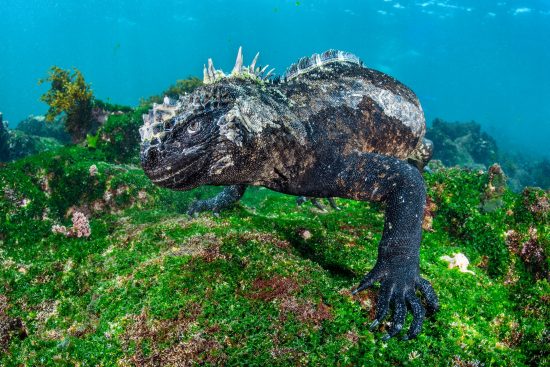
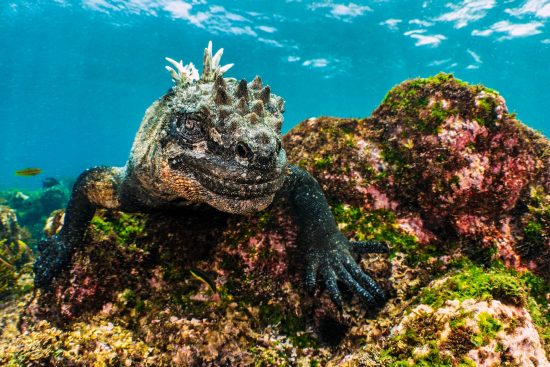

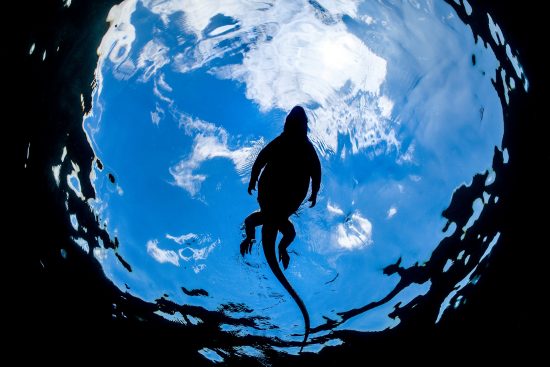
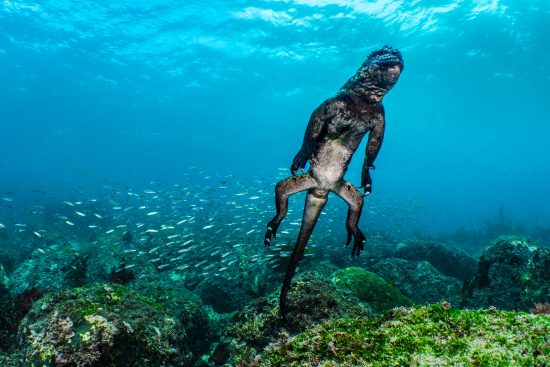
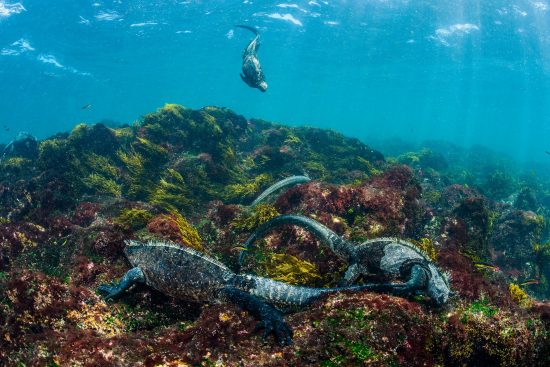
The northern islands of Wolf and Darwin are the most famous dive spots in Galapagos, but the highlight of my recent trip was in the colder waters of the west, diving with marine iguanas. When divers talk Galapagos, they typically discuss hammerheads and whale sharks, but these mini dragons, found nowhere else on Earth, offer up the most memorable diving experience in the archipelago, and one you can have nowhere else on the planet.
Descended from land iguanas that were carried to the island on driftwood, these creatures provide a classic example of how the unusual Galapagos conditions for life have provoked unique evolutionary adaptations. Although the islands would have seemed safe, the barren volcanic landscape provided little plant life for sustenance for the stranded iguanas. Instead, the marine iguana’s ancestors turned to the rich ocean, learning to dive down and feast on the lush seaweed that grows in the water.
While food is plentiful in the sea, however, the frigid water is a challenge for the cold-blooded reptiles, so they have evolved a black coloration that helps them heat up quickly both before and after diving. The best time to dive with them is late morning, giving them time to warm up thoroughly before their dive and then again afterwards. Our guides explain that the whole experience is a physiological challenge for the large lizards and asked us as divers to take care not to stress any individuals, watching and photographing each one for just a minute or so and doing so without disturbing its behaviour.
These miniature Godzillas dive with reptilian tenaciousness, gripping rocks as they chomp seaweed with their peg-like teeth. They are not actually interested in us at all, but because of their single-mindedness, watching these strong characters was just amazing. We were lucky to get a calm day, because in this location they like to feed is in the shallows, and I know from friends it can be very surgy and stirred up, which can make the dive far less enjoyable.
While it is probably the big animals of Galapagos that attract divers to book this trip, it was the big personalities of the endemic marine iguanas that proved the most memorable.
 Alex
Alex 15th February 2024
15th February 2024